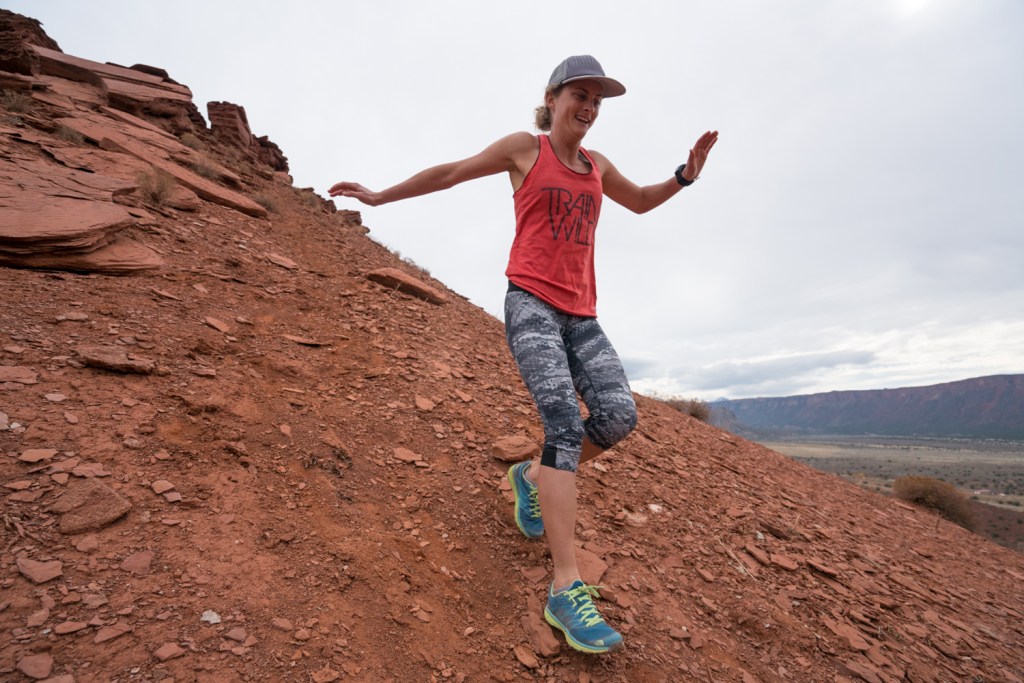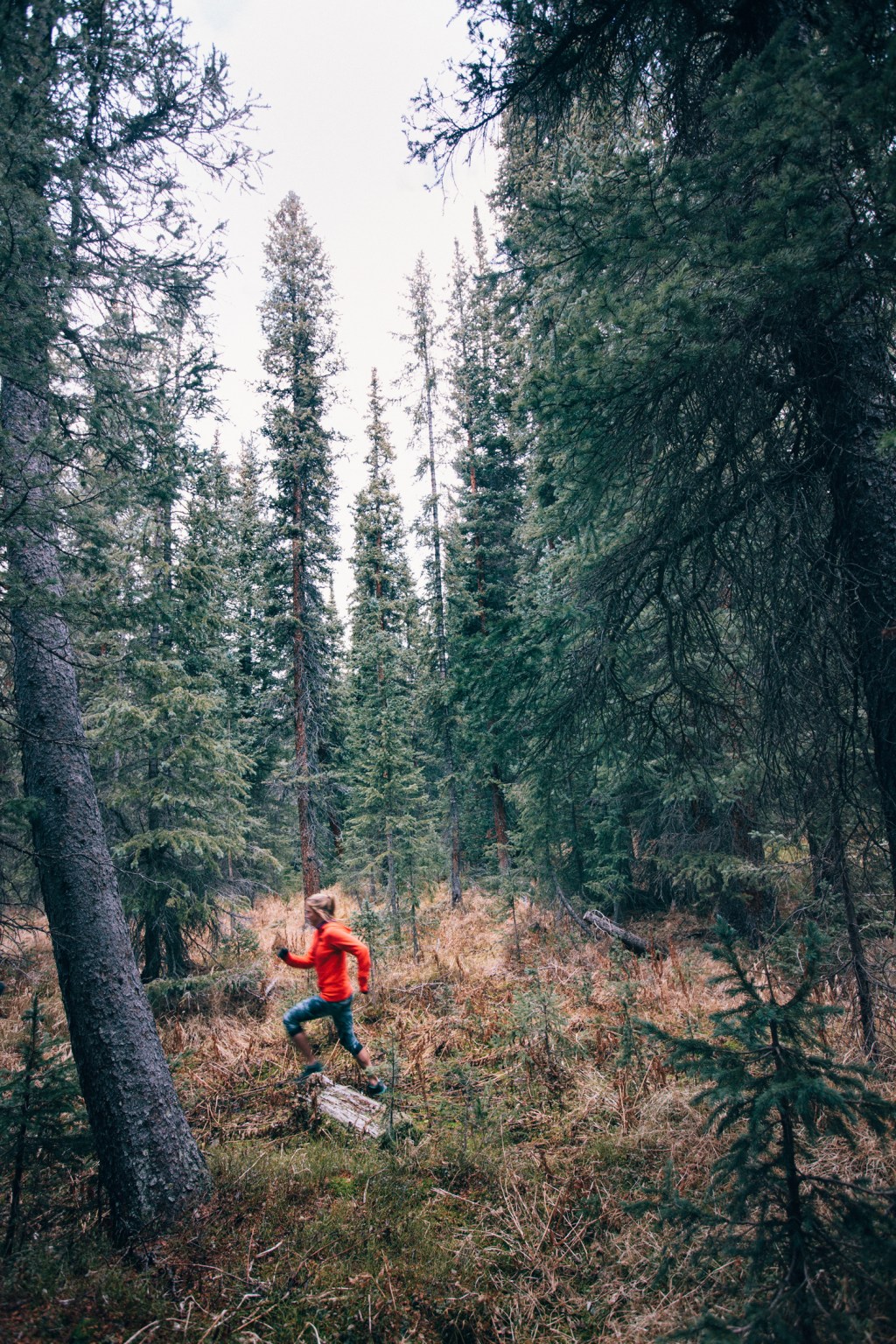Editor’s Note: Clare Gallagher started trail running in Thailand on whim. This year, a relative newcomer to the sport, she ran the second-fasted women’s time in the history of the grueling Leadville Trail 100 Run. Watch her story.
Thinking of taking up trail running, but you don’t know the second thing about it? I didn’t either when I started less than three years ago. And I ran Division I track and cross country at Princeton. It took almost two years for me to wrap my head around the nuances of trail running compared to road, track or, gasp, treadmill running, but luckily I’ve managed to get a grasp on trails. Figuratively, of course, because no one can ever actually know everything there is to know about Mother Gaia’s singletrack splendor.
Here are 4 key arenas to master in order to be the best trail runner you can be, whether you’re new to the sport or not:
1. Square away your gear—and this doesn’t mean, “go buy brand-new things!”
Buying a new pair of trail-specific shoes isn’t always necessary for trail running. Your shoe choice depends on the type of trails you’ll be running. So if you live in Moab, you might want shoes with sticky rubber soles for increased traction on slick rock. If you live in Boulder and make it to the high country often, you’ll want trail shoes with solid lugs (the cleat-like rubber protrusions on the soles) and probably rock plates (that solid piece of material hidden within a sole that protects your foot from prolonged pounding on rocky trails). If you live in New York City, Miami or Dallas, you’re probably set with your favorite road shoes. Don’t buy trail-specific shoes if your local trails are mild gravel and/or dirt paths. (See Tip 2 for finding out about your local haunts.)
A hydration system is your next important gear consideration. If you delve into the ultra distances (anything over a standard 26.2-mile marathon), you’ll want to invest in a hydration vest: a backpack/vest hybrid with lots of pockets for soft water flasks and/or a large back pocket for a hydration bladder. The pockets are also great for fuel—gels, sour gummies, chocolate bars, rice balls, etc., as well as anti-chafe cream, extra clothing, sunglasses, phones, etc. For medium-length trail runs, say 1-2 hours, a handheld water bottle or hydration belt (like the vest, but smaller and sits on your backside) should do the trick. The remote nature of most trails demands that you have adequate water and fuel for your outings. No convenience stores in the hinterlands of Tahoe!
As far as clothing goes, use common sense. If the weather’s bitingly cold or grossly hot, or you plan to be out for a long time and it could rain or could snow or could become unseasonably warm, prepare for it! That’s why you have a vest—and a pair of hips for tying a jacket around. Unlike road running, the consequences of inadequate preparation for trail running can be dire. If you’re new to the sport, be cautious, and as you become more comfortable with your routes and body-temperature fluctuations, you’ll be able to pare down your packed goods like a fine science.

2. Find your routes. Research. Become a student of the trails.
Trail running is exciting because you delve into the unknown! It takes more planning than your standard, dare I say boring, out-and-back neighborhood route. Trails are not roads. They are often difficult to find and even more challenging to navigate. Trailheads are notoriously inconspicuous. Routes are sometimes pathetically marked. Thus, if you set low expectations for your trail-route markings, you’ll inevitably be stoked to find that so many trails are beautifully simple to locate and navigate. Also, by setting your expectations low, you’re respecting the trail. Trails are desirable for their remoteness, natural beauty, wildlife and lack of cell service. It wouldn’t be a trail if it were perfectly easy to find, and crowded.
Looking up route maps on the myriad trail websites available today and investing in an actual book of your local haunts is how you become a student of the trails. Take your time on technical routes; don’t be surprised if you’re scrambling over large boulders, traversing fields of talus—especially on high altitude mountains—and getting caught in an afternoon thunderstorm. Try to minimize surprises that aren’t safe; for example, getting caught in a lightning storm above tree line. If you’re exploring a high-altitude route, aim to summit before noon. These types of tips are all specific to the routes you’re running, so again, be a student of your trail running.

3. Smile. You’re trail running.
The beauty of trail running is that you’re outside, enjoying nature, often with old friends or brand-new friends, and you’re running! Taking yourself too seriously is the biggest mistake you can make while trail running. Humility and laughter should flow copiously. Good memories are often realized in hindsight, after some serious Type II fun. Trail running is meant to help you exercise freely, see gorgeous wild places, and find solace in knowing we are tiny parts of a very grand place—our beautiful planet Earth.
4. Keep it clean.
Fittingly, the last and most important part of trail running is to never leave a trace: Always pick up and pack out any trash you find or generate. As trail runners, we relish the fact that the Earth is our playground. Let’s keep the dirt dirty in a natural way and not strewn with energy bar wrappers. Happy trails!
Challenge:
Find a new trail. All it takes is some work à la Tip 2. See something new and awe-inspiring! Or make your lungs sear like never before!
